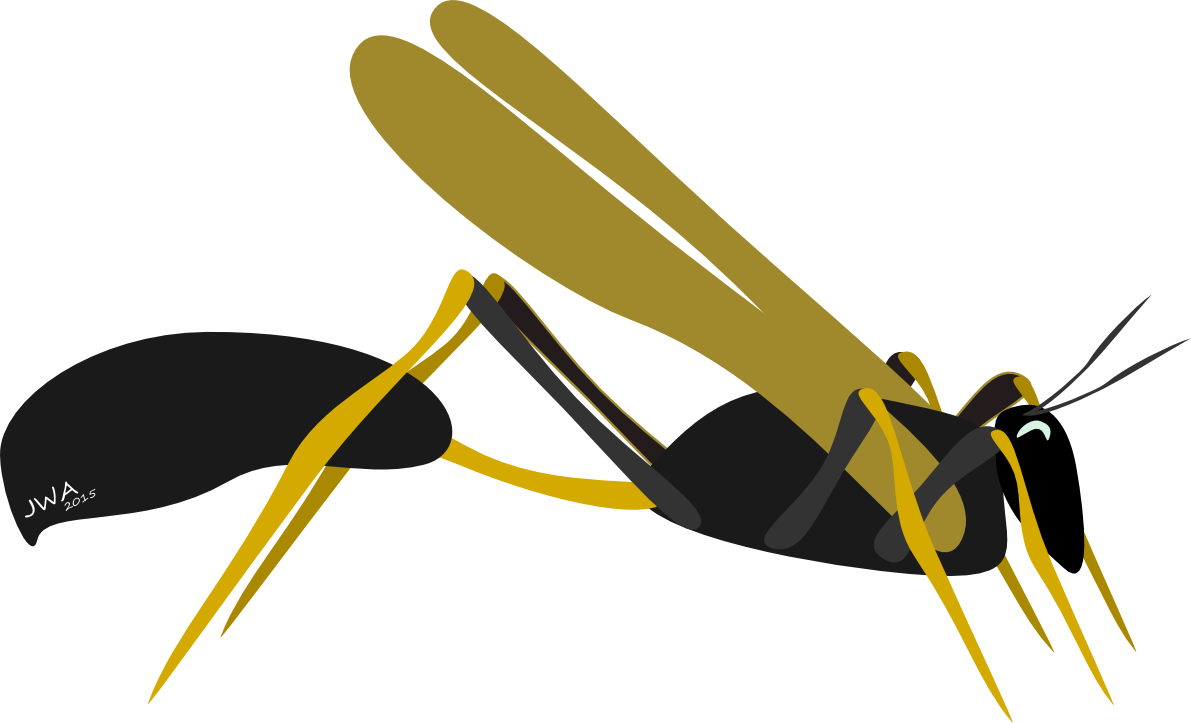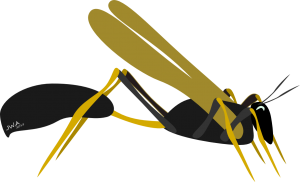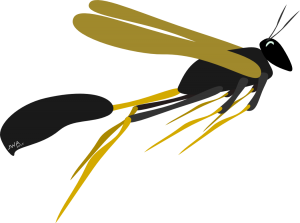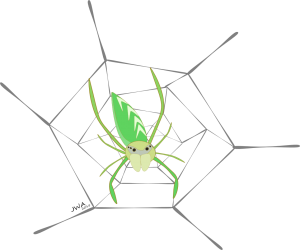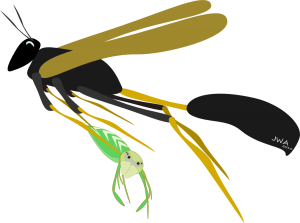While trying to photograph a particularly energetic jumping spider on a veranda in Zambia, I suddenly became distracted by the presence of Ian (one of the farmers). He walked past me with a familiar look that suggests he’s on a mission of mischief. After opening a wooden cabinet, he climbed in and there was a loud knock followed by an explosion of mud on the floor. He sauntered past me with a smirk and crawled underneath a wooden wardrobe, again there was a loud knock and explosion of mud.
After harassing a few more furnishings, Ian summoned me to inspect his glorified mess. I was surprised to find a huge diversity of spiders amongst the mud. Species I had never seen before, some with gold and red markings, some with vibrant green colouring and others with a thorn like structure protruding from their back. Ian explained that these were the nests of the black and yellow dauber, a type of wasp that paralyzes its prey with a sting, storing them in their nest for their larvae to devour after hatching.
Now I reckon these wasps could make for an awesome study system. Not only do they deliver live specimens, but they are found across the globe and different species specialise in different prey. Also, spiders aren’t the only thing on the menu with some species hunting down beetle larvae and others targeting caterpillars.
What’s that I hear you say “why study these pests?” well to mention but a few reasons:
- Turns out the venom of these wasps are of interest to the pharmaceutical industry, particularly for the treatment of neuropathologies [1]. The venom of spider-hunting wasps contains neurotoxins that prevent movement. Astonishingly, victims can make a full recovery from some stings and this can be in a matter of hours, days or months depending on the potency and blend of the aggressor’s venom [2].
- There is potential to investigate foraging ecology and predator-prey interactions. For example, it is suggested that wasps use both visual and chemical cues to locate prey, but some prey species, such as the ant mimic Peckhamia picata, have evolved to elude predators in both these channels [3]. Understanding these interactions will help shed light on why we see a large diversity of phenotypes and what their functions are.
- Now you may not know this, but for the novice arachnologist there are not many decent guides for spider identification (I have struggled to find anything half decent for regions of Africa). Perhaps the demand is not large enough, but that aside these wasps could help document spider diversity and ecology. The wasps provide living specimens and, if technology allows, small devices could be attached to the wasps to identify what plants the spiders were found on and where in the canopy they perch.
I’m sure there are lots of other research applications this study system could have, but either way the wasp’s behaviour provides opportunities to collect lots of data in the wild and on species that may be hard to access or that are undiscovered.
References
1.Monteiro, M. C., Romão, P. R. T. & Soares, A. M. 2009 Pharmacological perspectives of wasp venom. Protein Pept. Lett. 16, 944–952. (doi:10.2174/092986609788923275)
2.Piek, T. 1986 Venoms of the Hymenoptera: Biochemical, Pharmacological and Behavioural Aspects. Academic Press Inc.
3.Uma, D., Durkee, C., Herzner, G. & Weiss, M. 2013 Double deception: Ant-mimicking spiders elude both visually- and chemically-oriented predators. PLoS One 8. (doi:10.1371/journal.pone.0079660)
